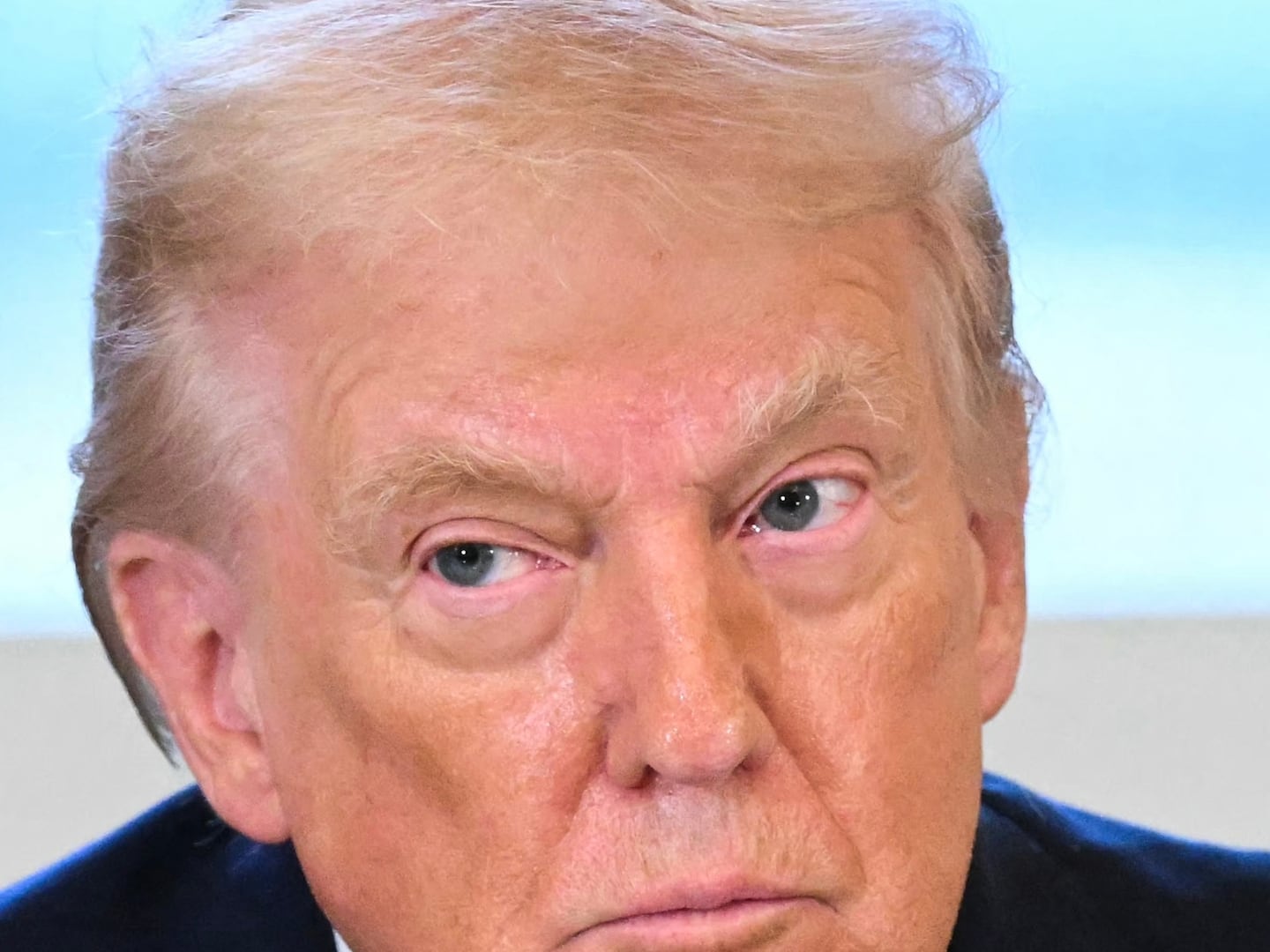What’s happened to Don Draper?

He made sense as a habitué of a different 1960s—the early part of that decade, before the personal was political, when masculinity was still narrowly defined and the sexual revolution a distant rumble. He was a paragon of masculinity—a tall, dark, and impossibly handsome enigma.
But as the 1960s became “the Sixties”—Mad Men is now in the heady days of 1969, nine years after we first met the ad men of Sterling Cooper—Don is no longer the man men want to be and women want to be with. He’s lost his allure as a smooth-talking corporate shill in a world upended by counterculture (hippies are, after all, hardly the stuff of fantasy). He’s an unemployed, emasculated wreck.
Indeed, the opening “fantasy” montage of Season 7 of Mad Men is so over the top it feels like satire: Don touches down in Los Angeles to the tune of Spencer Davis Group’s “I’m a Man,” his wife Megan strutting toward him in slow motion in a leggy, gossamer-mod dress. We half expect the music cue to be interrupted by something equally (and intentionally) cliché, like the brrrzzzzzzippp! of a record-scratch. But the fantasy—which is presumably Don’s vision of happier times—evaporates when we see the now bicoastal couple interact. The moment Megan takes the wheel in her new Austin-Healy convertible, it’s clear that she’s in the driver’s seat.
She has settled into Hollywood life as an up-and-coming actress, with a cozy house in the Hills. Don is uneasy in Megan’s isolated canyon pad, which he compares to Dracula’s castle. The howling coyotes unnerve him, and Megan has little patience for her Manhattanite husband’s neuroses. She’s empowered by her new life and apathetic at best toward Don, who hasn’t told her about his precarious job situation. When the couple has dinner with one of Megan’s producer-pals, Don feels threatened—until the industry insider assures the mopey ad man that his wife isn’t of interest to him. In LA, Don is an outsider; a Madison Avenue interloper; an encumbrance. Even his bedroom charms have evaporated. When he makes advances, she grasps for an excuse—“I thought you didn’t want to”—before reluctantly submitting. Later, when he purchases a massive TV set for her living room, she's offended by the imposition. The secretary has become the boss.
We’re not used to seeing Don so powerless, even though he lost his mojo some time ago. The old Don—the brooding, bourbon-guzzling philanderer and creative genius—was well on his way to becoming a nostalgic character by the middle of Season 6. He had fallen for his mistress, Sylvia (or at least convinced himself he’d done so), who then called the affair off. He opened up about his brothel upbringing to his partners and Hershey, and was granted an indefinite leave of absence from the ad firm he helped build, SCDP.
And this is where we find him at the beginning of Season 7, surreptitiously pitching creative ideas to Peggy via Freddy Rumsen, an AA success story and freelancer who will, alas, forever be remembered for wetting himself in a drunken stupor. Don isn’t out of ideas, but no one at the revamped firm besides Peggy seems to care a lick about ingenuity, so her attempts to prove herself to Don’s temporary replacement backfire. Don has been reduced to a junior copywriter by proxy.
The old Don was different.
The old Don oozed charisma. The old Don brought clients and partners to tears with his pitches. The old Don was a loving father and husband, and a hedonist. A “Master of the Universe” on the outside and a tortured soul on the inside. It was this dichotomy that made Don a fascinating, layered character. We, like his various conquests, were seduced by his facade of invincibility and haunted past. But now that veneer is gone, and what remains is a callow man-child at odds with himself. At the end of the season premiere episode, Don Draper has been reduced to a sobbing mess.
A meager 2.3 million viewers tuned in to the Season 7 premiere of Mad Men—compared to 3.4 million for the Season 6 premiere. People miss the old Don. So will the Don we think we know and love ever come back? Given how much time shapes and scars Mad Men’s characters, for better or worse, and how the show is carefully constructed around historical events, it’s hard to see what 1969 entails for Don—how he’ll be affected by the Civil Rights Movement, the Apollo 11 moon landing, the Manson murders, and so on. He probably won’t shack up in a swinger commune like Roger. Nor will he trade in his gray suit for checkered pants and a polo shirt like Pete, who’s embraced a laid-back, West Coast identity (he raves to Don about loving LA’s “vibrations”). Other characters are still navigating a change in hierarchy from the early ‘60s to the late ‘60s—a social structure of tailored suits, cigarette smoking, and corporate power upended by gipsy skirts, marijuana smoking and flower power.
It’s more likely that Don will continue to wallow in self-pity, and struggle to find his place in a world where, to borrow a phrase from feminist Carol Hanisch, “the personal is political.” And it’s a shame, because when it comes to Don getting his mojo back, one thing is certain: the last thing we want to see is him wearing prayer beads and preaching free love.






